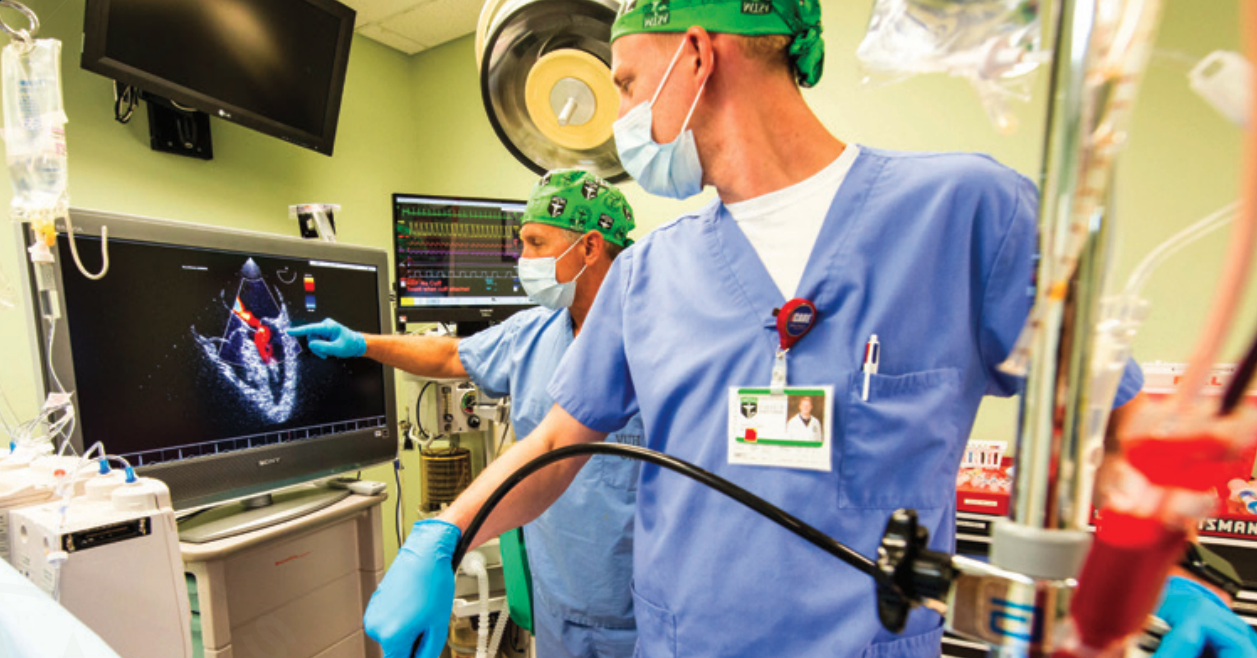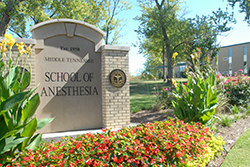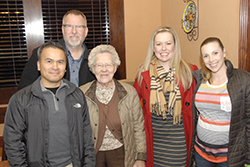
Ultrasound-Guided Fascial Plane Blocks for Acute Rib Fracture Pain
March 1, 2022
 MTSA’s latest issue of the Airways newsletter features a synopsis of the scholarly work of graduate and Acute Surgical Pain Management fellow Michelle Stotts (right), DNAP, CRNA. Future opportunities for Continuing Education focused on this and other topics will appear in upcoming issues of Airways upon CE credit approval from the AANA.
MTSA’s latest issue of the Airways newsletter features a synopsis of the scholarly work of graduate and Acute Surgical Pain Management fellow Michelle Stotts (right), DNAP, CRNA. Future opportunities for Continuing Education focused on this and other topics will appear in upcoming issues of Airways upon CE credit approval from the AANA.
“I’ve developed a passion for education and am eager to share the knowledge obtained through MTSA with SRNAs and my CRNA colleagues.” —Michelle Stotts, Class of 2021
TITLE: Ultrasound-Guided Fascial Plane Blocks for Acute Rib Fracture Pain in a Level IV Trauma Center: A Literature Review and Introduction of an Evidence-based Analgesia Algorithm for Uncomplicated Rib Fractures
AUTHORS: Michelle Stotts, DNAP, CRNA; Hallie Evans, DNP, CRNA, APRN; Christian Falyar, DNAP, CRNA; Bill Johnson, DNAP, CRNA.
SYNOPSIS: Effective pain management reduces the incidence of respiratory complications in rib fracture patients. The incorporation of ultrasound into regional anesthesia has led to newer fascial plane blocks of the chest wall that can be used as part of a multimodal pain management plan. While current systematic reviews focus on indications and efficacy of fascial plane blocks compared to placebo, there is little research comparing them to traditional methods of regional analgesia for rib fracture pain. A literature review was conducted comparing ultrasound-guided erector spinae or serratus anterior fascial plane blocks to thoracic epidural or paravertebral blocks for the treatment of acute chest wall pain to support development of a rib fracture analgesia algorithm. Overall, studies comparing the fascial plane and traditional regional analgesia groups found comparable analgesia, opioid consumption and improved respiratory function in thoracic surgery and rib fracture patients. Development of an evidence-based multimodal analgesic algorithm incorporating ultrasound-guided fascial plane blocks to guide the management of acute rib fracture pain provides additional regional pain management options. This has implications for rural and small community facilities where traditional regional interventions may not be feasible.
ABOUT THE AUTHORS
Michelle Stotts, DNAP, CRNA, is a nurse anesthetist at Roane General Hospital, a Level IV Trauma Center and Critical Access Hospital (CAH), in Spencer, WV. She is a graduate of CAMC’s School of Nurse Anesthesia with a Masters in Healthcare Administration from Marshall University in 2002. The author was a student in the Doctorate of Nurse Anesthesia Practice Completion Program at Middle Tennessee School of Anesthesia at the time this article was written.
Hallie Evans, DNP, CRNA, APRN, is an Associate Professor at MTSA.
Christian Falyar, DNAP, CRNA, is an Assistant Professor and Assistant Director of the Duke University Nurse Anesthesia Program in Durham, NC.
Bill Johnson, DNAP, CRNA, is the Director of the Acute Surgical Pain Management Fellowship at MTSA.








